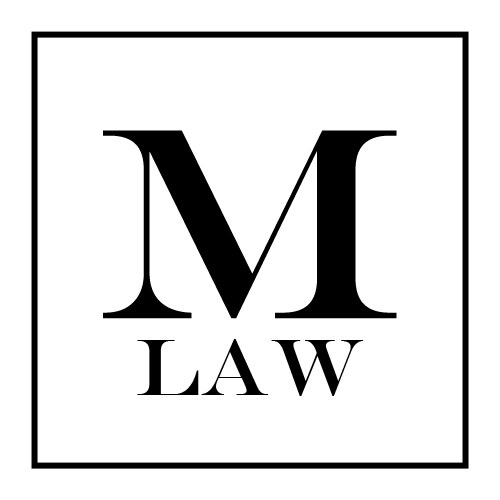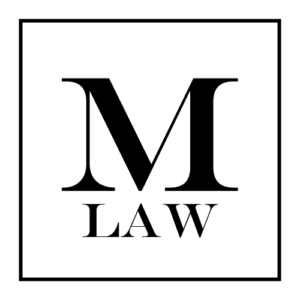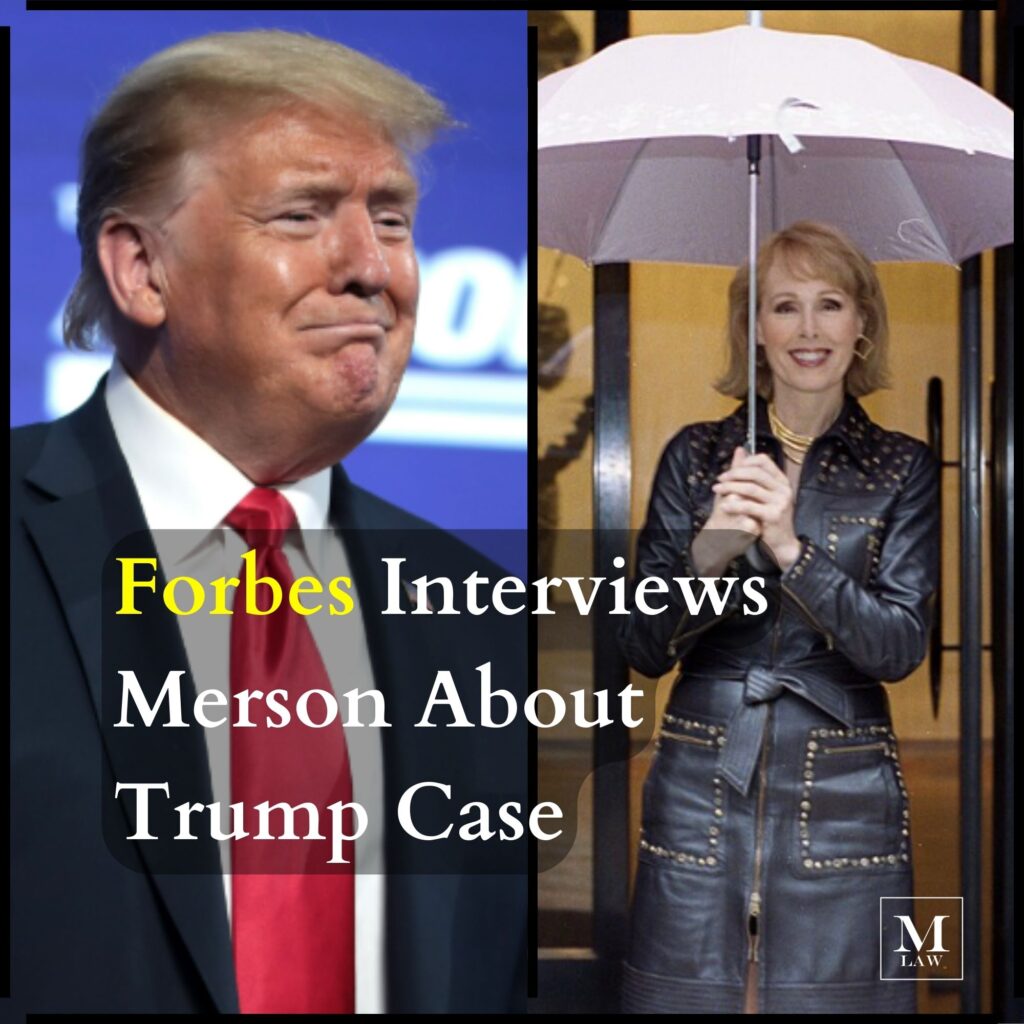Merson Law Review: VOL. III NO. 1 January 25, 2023
Editor in Chief: Steven E. North, Esq.
Case Editor: Emily C. Vaught, Esq.
1. DEFENDANT TRYING TO TWIST THE ATTORNEY-CLIENT PRIVILEGE INTO A PRETZEL USING UNDERHANDED TACTICS, PER THE COURT
BEWARE: DO NOT BCC YOUR CLIENT
Dworkin Construction Corp. (USA) v. Kelly’s Sheet Metal, Inc., Index No. 652974/2022 (Sup. Ct. N.Y. Cnty. Dec. 21, 2022) [linked here]
Background: The plaintiff’s attorney sent an email to the defendant’s attorney and “blind copied” his client, the plaintiff. In turn, the client replied to the email seeking privileged legal advice from his attorney and then hit “Reply to All”. Immediately, the plaintiff’s attorney realized that his client, by hitting “Reply to All”, necessarily copied the email to the defense attorney. Plaintiff’s attorney then asked the defense attorney to delete the email. The defense attorney not only refused but instead claimed that the attorney-client privilege was completely waived and that he intended to seek all communications between the plaintiff’s attorney and his client. Hence, the plaintiff moved (1) for injunctive relief enjoining the defendant from using the privileged communication for any purpose, and (2) for a protective order directing the defendant to delete the inadvertently disclosed email. The defendant opposed the motion, arguing that the plaintiff waived the entire attorney-client privilege by sending a privileged email to defense counsel and failing to take any precautions to prevent such disclosure.
Holding: The court (Arlene P. Bluth, J.) noting that “cases should be decided on their merits and not with gotcha litigation tactics… [nor]… underhanded tactics” held that the defense counsel cannot “throw common decency to the wind, and twist the attorney-client privilege into a pretzel without any consequences”. The court ordered defense counsel to destroy the subject email immediately (and all copies of it) and precluded the use of the email for any purpose whatsoever. The court noted that there was no dispute that the plaintiff never intended to waive its privilege and found that the defendant would not suffer any undue prejudice from the preclusion of the use of the email. The court further ordered an in-person hearing to determine potential sanctions against the defendant, finding that “counsel for defendant confused best practices with the basic common courtesy expected of members of this profession” as he “planned to use this isolated and benign mistake as a battering ram to make plaintiff reveal all its communications with its attorney. That is not how the practice of law should be conducted. Hooray for Justice Bluth!
Editors’ Notes:
(1) If a BCC email recipient hits “Reply to All”, the original sender will receive the reply email and all other recipients of the original email will receive a CC email. Accordingly, as a matter of practice, it is prudent to never BCC clients on emails sent to opposing counsel or the court. See e.g. Don’t Get Burned by the BCC, American Bar Association (Jan. 31, 2020) [linked here].
(2) Per the First Department’s holding in New York Times Newspaper Div. of New York Times Co. v. Lehrer McGovern Bovis, Inc.: “Disclosure of a privileged document generally operates as a waiver of the privilege unless it is shown that the client intended to maintain the confidentiality of the document, that reasonable steps were taken to prevent disclosure, that the party asserting the privilege acted promptly after discovering the disclosure to remedy the situation, and that the parties who received the documents will not suffer undue prejudice if a protective order against use of the document is issued.” 300 AD2d 169, 172 (1st Dept. 2002) [linked here].
(3) In Terpin v. Pinsky, 20 Civ. 3557 (S.D.N.Y. Aug. 19, 2022) [linked here] the court (Andrew Krause, USMJ) came to a somewhat different conclusion when faced with a similar set of facts. In Terpin, defense counsel inadvertently sent plaintiff’s counsel an email discussing the method by which the defendant wanted to pay his initial retainer and whether the method was acceptable to the law firm. The court determined that the plaintiff could retain the email and use it in litigation, noting “a long and unbroken line of cases” in the Second Circuit which have established that client identity and fee arrangements do not fall within the attorney client privilege.
2. MISSED DEADLINE FOR OPPOSING A MOTION – LAW OFFICE FAILURE EXCUSED
First Am. Tit. Ins. Co. v. Successful Abstract, LLC, 2022 NY Slip Op 07186 (1st Dept. Dec. 20, 2022) [linked here]
Background: The plaintiff moved for summary judgment in this commercial contract litigation. The defendant failed to file an opposition to the motion resulting in the court (Arlene P. Bluth, J.) granting the motion as unopposed and setting a date for an inquest. The day before the inquest—approximately one month later—the defendant requested an adjournment, stating that he intended to move to vacate the Court’s decision as he “had miscalendered” the return date of the motion. However, the defendant, despite an obvious opportunity to do so promptly, “failed to move to vacate for months and months” and only did so after the inquest had been completed and the plaintiff had successfully entered a judgment against him. Accordingly, the court denied the defendant’s motion to vacate.
Holding: The appellate court, ignoring the defendant’s delay in trying to remedy the matter upon which the trial court based its decision, unanimously reversed. The Court noted that law office failure of miscalendaring dates has been deemed a reasonable excuse, and that a party should not be deprived of its day in court due to counsel’s error.
Editors’ Note: A reading of the lower court’s holding [linked here] demonstrates that the court’s decision not to vacate the order was based on the defense attorney’s dilatory behavior in filing his motion to vacate which is a reasonable consideration. However, the appellate court made no mention of the attorney’s untimely filing of his motion nor his dilatory conduct. Under these circumstances, should the appellate court have substituted its judgment for that of the trial court?
3. PLAINTIFF CANNOT GET AWAY WITH A 180 DEGREE TESTIMONIAL FLIP TO DEFEAT A SUMMARY JUDGMENT MOTION
Nass v. City of New York, 2022 NY Slip Op 06132 (2d Dept. Nov. 2, 2022) [linked here]
Background: The plaintiff commenced an action to recover for personal injuries sustained when he slipped on a patch of ice in a paved triangular area adjacent to a traffic circle. The City moved for summary judgment, arguing that it did not engage in any snow removal activity within the subject triangular area, and therefore was not responsible for creating the icy condition that caused the plaintiff to fall. In opposition, the plaintiff submitted an affidavit (completely contrary to his testimony at the GMU §50-h hearing) averring that he observed City personnel shoveling the snow from the subject triangular area the day before the accident. The court (Katherine Levine, J.) denied the City’s motion.
Holding: The appellate court reversed on the grounds that the plaintiff’s affidavit directly contradicted the testimony he had given at his GMU §50-h examination. At that examination, the plaintiff had testified that he had never seen anyone clearing snow from the triangular area. As the plaintiff failed to provide a plausible explanation for the inconsistent statements, the Court determined that “his affidavit must be viewed as presenting a feigned factual issue [kindly expressed] designed to avoid the consequences of his earlier testimony, and it is insufficient to raise a triable issue of fact.” Accordingly, the trial court should have granted the defendant’s motion for summary judgment dismissing the complaint.
4. MEDICAL MALPRACTICE AND WRONGFUL DEATH STATUTES OF LIMITATIONS – WRONGFULLY PLEADED CAUSE OF ACTION
Proano v. Gutman, 2022 NY Slip Op 07253 (2d Dept. Dec. 21, 2022) [linked here]
Background: The plaintiff commenced an action on November 9, 2015 to recover damages for medical malpractice and also for wrongful death arising from the death of the plaintiff’s decedent on November 9, 2013 from cancer. Following discovery, the defendants moved for summary judgment, claiming, inter alia, that both actions were time barred. The cause of action articulated in the complaint for “Wrongful Death” was entitled as a claim for “Loss of Services” rather than for “Wrongful Death”. The court (R. Bruce Cozzens, Jr., J.) granted the motions.
Holding: The appellate court affirmed in part and reversed in part. As pertaining to to the medical malpractice claim, the Court held that the defendants established that more than two years and six months had elapsed between the action’s commencement in November of 2015, and the patient’s last related treatment which was in March of 2013 notwithstanding the fact that there was treatment by the defendant after March 2013 for unrelated conditions. Accordingly, the medical malpractice claim was time barred and properly dismissed. However, the trial court erred in directing dismissal of the wrongful death cause of action since it was properly commenced within two years after the
decedent’s death and was therefore timely. The Court held that even though the cause of action for Wrongful Death was encaptioned “Loss of services” all of the necessary elements to plead a cause of action for wrongful death were alleged.
Editors’ Notes:
(1) Per General Construction Law – GCN § 20 [linked here]: “A number of days specified as a period from a certain day within which or after or before which an act is authorized or required to be done means such number of calendar days exclusive of the calendar day from which the reckoning is made.” (emphasis added). Hence the filing on November 9, 2015 relating to a death of November 9, 2013 is just under the wire.
(2) Medical malpractice and wrongful death causes of action have different statutes of limitations. If the medical malpractice results in the death of the patient, the statute of limitations for the medical malpractice claim begins to run on the date of the last treatment, not on the date of death. Pursuant to CPLR 214-a [linked here], a medical malpractice cause of action must be commenced within two years and six months “of the act, omission or failure complained of or last treatment where there is continuous treatment for the same illness, injury or condition.” Pursuant to EPTL 5-4.1 [linked here], an action for wrongful death “must be commenced within two years after the decedent’s death” provided that the cause of action for medical malpractice had not yet expired.
AMENDMENTS TO UNIFORM RULES EFFECTIVE JULY 1, 20221
As litigators, it is important to remain up to date with the Uniform Rules. Twelve of the Rules have recently been revised and are now in full effect. “The revised Uniform Rules addressed many important aspects of civil practice, including motions in general, and summary judgment motions in particular.”2 Three amendments relate to papers, four amendments relate to discovery disclosures, and five amendments relate to trial practice. Below is a brief synopsis of the amendments:
- 22 N.Y.C.R.R. § 202.5(a)(2) – Papers Filed in Court: § 202.5(a)(2) was clarified to limit the bookmarking requirement for memoranda of law, affidavits, and affirmations that exceed 4,500 words only to those prepared with the use of a computer software program.
- 22 N.Y.C.R.R. § 202.8-b – Length of Papers: § 202.8-b received three revisions:
a. § 202.8-b(a) and (c) were amended to clarify that the word count applies only to papers that are prepared by the use of the computer (as opposed to typewritten/handwritten documents);
b. § 202.8-b(d) was added to provide that where typewritten or handwritten, affidavits, affirmations, briefs and memoranda of law in chief are limited to 20 pages each and reply affidavits, affirmations, and memoranda are limited to 10 pages each.
c. § 202.8-b(e) was added to provide that the affidavits, affirmations, briefs, or memoranda for cross motions are limited to 7000 words when prepared by computer, or 20 pages when typewritten or handwritten. - 22 N.Y.C.R.R. § 202.8-g – Motions for Summary Judgment; Statement of Material Facts: § 202.8-g also received three revisions:
a. § 202.8-g(a) now provides that the court may direct that there shall be a separate Statement of Material Facts, whereas before the amendment, the separate Statement of Material Facts was required.
b. § 202.8-g(c) now provides that any of the statements that are not controverted may be deemed admitted and only for the purpose of the motion, not the entire action.
c. § 202.8-g(e) was added to provide remedies to the court where a party fails to provide statement or counter-statement of facts. - 22 N.Y.C.R.R. § 202.20 – Interrogatories: § 202.20 now provides that Interrogatories are limited to 25 in number unless the parties agree or the court orders otherwise.
- 22 N.Y.C.R.R. § 202.20-a(b) – Privilege Logs: § 202.20-a(b) as amended no longer requires the memorializing of agreements and protocols in a court order.
- 22 N.Y.C.R.R. § 202.20-c(c) – Requests for Documents: § 202.20-c(c) as amended no longer requires the responding party to verify the response to each individual request. Now, a response to a demand for documents requires an affidavit at the end by the responding party attesting to the information required by the rule.
- 22 N.Y.C.R.R. § 202.20-h – Pre-Trial Memoranda, Exhibit Book and Requests for Jury Instructions: § 202.20-h no longer mandates that parties “shall” submit pre-trial memoranda. Now, the court has the discretion to direct such compliance
- 22 N.Y.C.R.R. § 202.20-j – Adherence to the Electronically Stored Information (“ESI”) Guidelines Set Forth in Appendix Hereto: § 202.20-j was added and states: “Parties and nonparties should adhere to the Electronically Stored Information (“ESI”) Guidelines set forth in Appendix A hereto.” [Appendix A is linked here]
- 22 N.Y.C.R.R. § 202.20-i –Direct Testimony by Affidavit: § 202.20-i as amended removed the court requirement. Now, upon request by a party, the court can permit such testimony.
- 22 N.Y.C.R.R. § 202.26(c) – Settlement and Pretrial Conferences: § 202.26(c) as amended no longer applies to jury trials. Pursuant to the amendment, the court’s right to direct consultation among counsel regarding expert testimony is limited to non-jury trials or hearings.
- 22 N.Y.C.R.R. § 202.34 – Pre-Marking of Exhibits: § 202.34 as amended provides the court with the discretion to be able to remove the requirement of pre-marking exhibits and states that the court “should” (instead of “will”) rule at the earliest possible time on any objections to contested exhibits.
- 22 N.Y.C.R.R. § 202.37 – Scheduling Witnesses: § 202.37 as amended makes clear that the estimates of the length of testimony and order of witnesses provided by counsel are advisory only and that and the court may permit witnesses to be called in a different order and may permit further testimony from a witness.
1 See Ferstending, David L., Amendments To Uniform Rules, NEW YORK STATE LAW DIGEST, No. 741 (Aug. 2022).
2 Connors, Patrick M., Revised Uniform Rules Amendments Effective July 1, 2022, NEW YORK LAW JOURNAL (July 19, 2022).





